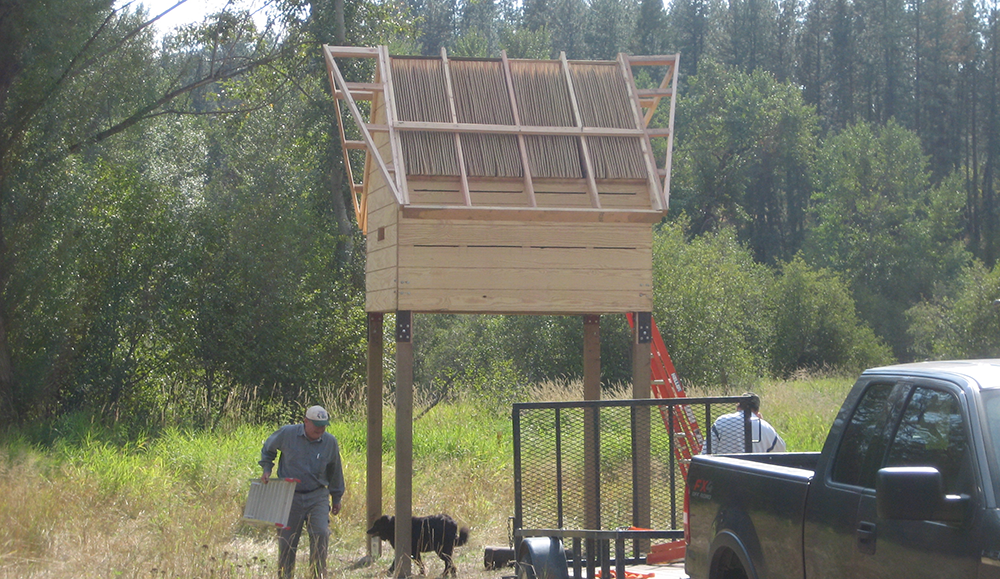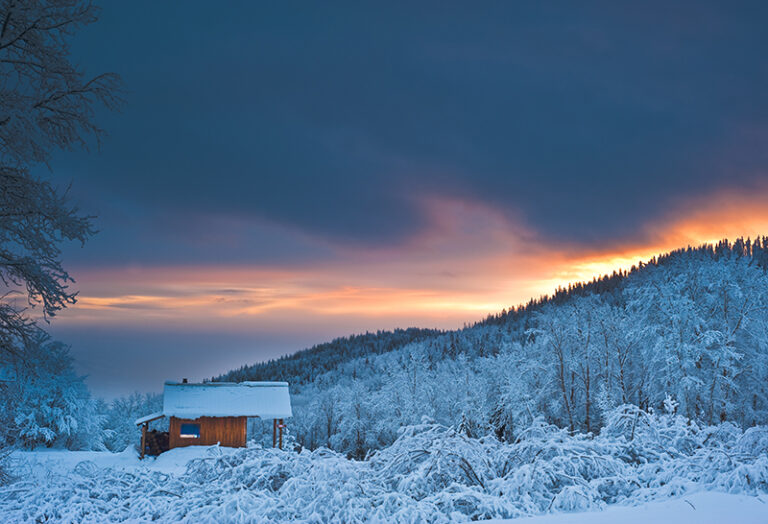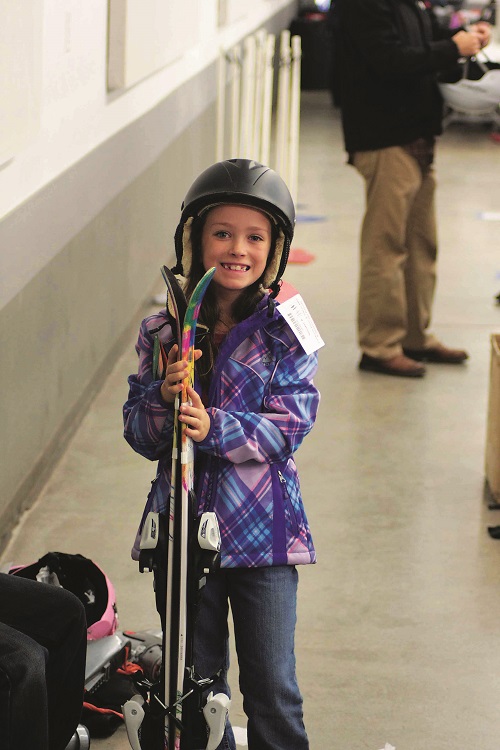The first time I remember interacting with bats was as a young child in New Jersey. I was watching these dark whirling critters dive and circle in the sky as I waited for 4th of July fireworks. Out of the dark a man walked up and explained that these were bats and if you throw small rocks or acorns up in their paths, they would dive and seemingly change from quick dark blurs to—for a brief moment—furry mammals with quick, membranous wings. I was hooked! From then on I took any opportunity to see these intriguing mammals; from seeing roosts of cat sized flying foxes in Australia, to counting bats in abandoned mines for the Forest Service, to watching tens of thousands of bats tornado out of lava tubes in New Mexico. And now, I have the chance to see bat condos on the Little Spokane.
In 2004 Mike Weaver bought his grandparents house near the Little Spokane River and soon found out that he and his family were not the only residents. On summer evenings bats joined the Weavers, flying around their living room. They called a biologist to help assess the situation and soon realized they had a colony of approximately 10,000 Yuma myotis bats (Myotis yumanesis) living in their attic!
After wading through knee-deep bat guano in their attic, the Weavers decided to find a new home for their bat neighbors and restore their 1800s-era house. After searching around and help from Mike Weavers’ uncle, they were able to find a federal grant to fund a project to relocate the bats. As with much federal funding it took a few years to come through. During this time the weavers tried to plug any access points into the house that they could find and place bat boxes near the house to entice the bats to take up residence there.
When funding finally arrived, the Weavers, Washington Department of Fish and Wildlife, and the Inland Northwest Wildlife Council constructed a bat condominium complex, designed for the extended bat family—all 10,000 members of the roost. Its dimensions are 8x8x8 feet, and it is raised up on 8-foot stilts where the many internal plywood baffles have been roughed up so the bats can cling to it upside down while they sleep. There is even a kid’s zone, an open area where pups can practice flying in a protected area. With all the tight internal walls there is over 5,500 square feet of roosting area.
Condo management is taken care of by volunteers with the Inland Northwest Wildlife Council who clean and paint the bats’ home on a regular basis. WDFW has done several population surveys and during each count they find more bats utilizing the condo. According to Michael Atamian, regional biologist with WDFW, there were approximately 2,600 individuals in 2013 and during the last count in 2016 there were 4,500.

The bats only use condo during the warm months to rear their pups. Once the weather changes, they migrate to their winter hibernating spot. Interestingly, little is known about the winter habits of bats in this region. What is known is that White Nose Syndrome has reached Washington State. White Nose Syndrome is a fungus that infects and kills bats during hibernation. It has been affecting winter hibernation sites on the East Coast for a number of years and has recently been discovered in King County. This is a concern to regional biologist and, as part of their effort to study bat populations, WDFW will be conducting yearly population counts on the Weaver’s bat condo.
After the bats relocated from the Weavers’ attic, the Weavers were able to clean out their attic, live undisturbed during the summer, and put their home on the Spokane County historic registry. This is a great example of how private property owners, wildlife managers, and conservation groups can work together to conserve both cultural resources and provide habitat for wildlife.
Feature photo: The bat condo during construction in 2008. // Courtesy of Washington Department of Fish & Wildlife.













